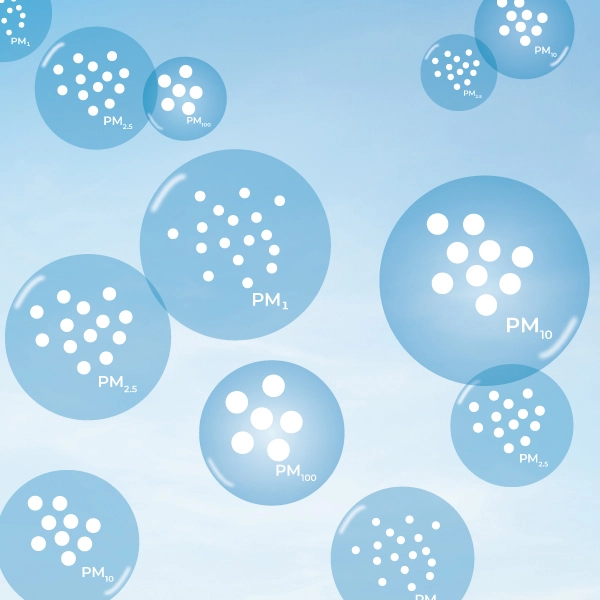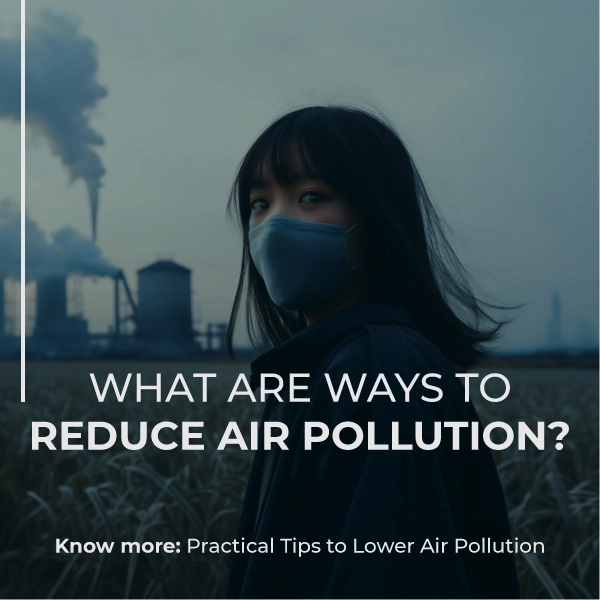As an environmental expert, my understanding and concern regarding the impact of dust particles on our health and planet have deepened significantly. These minuscule particles, omnipresent in our environment, pose severe challenges to air and water quality, soil health, and human well-being. The journey of a dust particle, from its origins to its final destination, whether in our lungs or settling on the earth, tells a complex story of environmental interaction and impact.
The origins of these dust particles are diverse. Natural sources such as soil and pollen contribute significantly, but human activities like vehicle emissions, industrial pollution, and construction work are also significant contributors. Furthermore, even ordinary indoor activities, such as cooking, sweeping, and vacuuming, can release these particles into our surroundings.
In conclusion, the challenge of dust particles is not to be underestimated. It encompasses environmental, health, and societal dimensions, requiring a multifaceted approach. As an expert in this field, we advocate for a collective effort to decrease our exposure to dust particles and reduce their emission, thereby safeguarding our health and protecting the delicate balance of our planet.
Dust Particle Sizes
Dust particles are essential in the complex environmental influences that affect human health. These particles, which range in size, have diverse features and behaviours that dramatically influence their potential health impacts. Understanding the spectrum of dust particle sizes from submicron to coarse is critical to understanding how they affect our health and the environment.
Health Effects of Dust Particles
The health effects of dust particles depend on their size, composition, and concentration. Submicron and fine particles pose the most significant risk due to their ability to infiltrate the lungs and damage the respiratory system. Exposure to these particles can lead to a range of health problems, including asthma, bronchitis, emphysema, heart disease, cancer, stroke, and even premature death.
Children, the elderly, and individuals with preexisting health conditions are particularly susceptible to the harmful effects of dust particles. Their heightened vulnerability is due to their more sensitive lungs and immune systems.
Protecting Yourself from Dust Particles
Protection from dust particles involves several strategies. During dust storms, staying indoors and keeping windows and doors closed is advisable. Using a high-efficiency particulate air (HEPA) filter in homes can help. Reducing activities that generate dust, such as sweeping and vacuuming, and wearing a dust mask in dusty environments are also effective preventative measures.
Concept of Microns and Micrometers as Units of Measurement for Particle Size
Introduce the Range of Dust Particle Sizes.
In scientific measurement, especially when dealing with the tiny, microns and micrometres play a crucial role. These units, essentially synonymous with each other, provide a scale to measure the minuscule – from the size of bacteria and viruses to dust particles and thin films used in technology.
Understanding Microns and Micrometers
A micron, or a micrometre, is a unit of length in the metric system. It is equivalent to one-millionth of a meter (1×10−6 metre) or one-thousandth of a millimetre (0.001 mm). This minute scale makes it an ideal unit for measuring tiny particles and thin layers, often invisible to the naked eye.
Importance of Microns and Micrometers
The scale of microns and micrometres is integral in various fields due to the significant impact of particle size on the properties and behaviour of materials. For instance:
- Environmental Monitoring: These units measure air pollutants like dust and pollen, which are essential for assessing air quality and identifying pollution hotspots.
- Product Quality Control: In industries such as food, pharmaceuticals, and cosmetics, particle size, measured in microns, ensures products meet specific quality standards.
- Medical Research: The size of cells, bacteria, and viruses, quantified in microns, is crucial in disease research and the development of treatments.
Measuring Techniques
To measure particles in microns, different methods are employed based on the size range:
- Optical Microscopes: Useful for particles as small as 0.2 microns.
- Electron Microscopes: Capable of measuring particles down to a few nanometers, much smaller than what optical microscopes can detect.
- Laser Diffraction Particle Size Analyzers: These instruments use laser beams to analyse diffraction patterns created by particles, helping calculate their size.
Real-World Applications
The utility of microns and micrometres spans several practical applications:
- Air Quality Monitoring: The EPA uses microns to measure particulate matter in the air, including various pollutants like dust and smoke.
- Food Safety: The FDA sets food safety standards, such as fat content in ground beef, by measuring particle sizes in microns using laser diffraction analyzers.
- Pharmaceutical Manufacturing: Drug particle size, measured in microns, is crucial for determining absorption rates into the bloodstream, influencing the efficacy of medications.
- Electronics Manufacturing: In semiconductor manufacturing, the size of microchip features, measured in microns, directly affects performance. More minor features enable faster, more powerful chips.
In our everyday environment, indoors and outdoors, we are constantly surrounded by dust particles. These minute particles, often overlooked, are significant both in their presence everywhere and their impact. Dust ranges in size from the almost invisible submicron to the more visible coarse particles. Dust originates from the soil, pollen, dead skin cells, and textile fibres. Understanding the range of dust particle sizes is crucial in comprehending their role in our environment and their potential effects on health.
Types of Dust Particle Sizes
Dust particle sizes are generally categorised into three distinct groups:
- Submicron Particles (less than 1 micron): These are the smallest dust particles, often suspended in the air for extended periods due to their tiny size. Submicron particles are particularly challenging to remove from the air and most likely to be inhaled, posing significant health risks.
- Fine Particles (1-10 microns): Slightly larger than submicron particles, fine particles can still penetrate the airways and cause various respiratory problems, including asthma, bronchitis, and emphysema.
- Coarse Particles (10-100 microns) are the largest dust particles. They tend to settle out of the air more quickly and are less likely to be inhaled deeply into the lungs. However, they can still irritate the eyes and nose.
Examples of Dust Particle Sizes
To put these categories into perspective, consider these examples:
- Submicron particles include cigarette smoke, diesel exhaust, and wood smoke.
- Fine particles: Examples are pollen, dust mites, and mould spores.
- Coarse particles are typically sand, construction, and road dust.
Explain Dust Particle Size Ranges and their Effects:
Dust particles, a common component of indoor and outdoor environments, vary widely in size, each with distinct implications for health and environmental quality. Understanding these particle sizes, particularly submicron, refined, and coarse particles, is crucial for assessing their potential health effects and implementing protective measures.
Submicron Particles (Less than 1 Micron)
Submicron particles represent the smallest category of dust particles, with sizes less than 1 micron. Their minuscule size allows them to remain airborne for extended periods, increasing the likelihood of inhalation. These particles are known for their capacity to penetrate deep into the lungs and potentially enter the bloodstream, affecting various organs in the body.
Sources of Submicron Particles:
- Vehicle emissions
- Industrial pollution
- Wood burning
- Dust storms
- Wildfires
- Indoor activities like cooking, sweeping, and vacuuming
Effects of Submicron Particles:
- It can penetrate deep into the lungs, damaging the respiratory system.
- It may enter the bloodstream, affecting other organs.
- Linked to health issues like asthma, cardiovascular disease, and lung cancer.
Fine Particles (1-10 Microns)
Fine particles are more prominent than submicron particles but small enough to penetrate the airways. Their ability to infiltrate the respiratory system poses various health risks, primarily affecting lung function.
Sources of Fine Particles:
- Vehicle emissions
- Industrial pollution
- Sea salt s
- Agriculture
- Construction activities
- Indoor activities like frying food and burning candles
Effects of Fine Particles:
- It can irritate the airways, leading to respiratory issues like asthma, bronchitis, and emphysema.
- Exacerbate existing respiratory conditions.
- Associated with an increased risk of heart disease, stroke, and premature death.
Coarse Particles (10-100 Microns)
Coarse particles are the largest in the dust particle spectrum. They generally settle out of the air more quickly than smaller particles, reducing the likelihood of inhalation. However, they can still irritate, particularly to the eyes and nose.
Sources of Coarse Particles:
- Dust storms
- Construction activities
- Agriculture
- Unpaved roads
Effects of Coarse Particles:
- It can irritate the eyes and nose.
- It may reduce visibility.
- Linked to an increased risk of respiratory problems, especially in individuals with preexisting respiratory conditions.
The range of dust particle sizes, spanning from submicron to coarse, significantly impacts their behaviour and potential health effects. The smaller submicrons and fine particles, due to their ability to be inhaled deep into the lungs, pose the most significant health risks. These particles can cause a range of respiratory and cardiovascular issues and, in some cases, lead to premature death.
Real-World Examples of Dust Particle Sizes
Understanding dust particles in the context of everyday items provides a tangible perspective on their sizes and potential impacts. Dust particles, ranging from submicron to coarse sizes, are integral to our environment and significantly influence air quality and health. Here, we explore real-world examples of dust particle sizes to grasp their scale and effects better.
Human Hair
Typically, human hair has a diameter of about 50-100 microns, categorising it as a coarse dust particle. While coarse particles are generally less harmful than their finer counterparts, as they are less likely to be inhaled deeply into the lungs, they can still irritate the eyes and nose. The size of human hair serves as a benchmark for understanding the larger end of the dust particle spectrum.
Pollen Grains
Pollen grains vary in size from approximately 10-100 microns, placing them in the fine to coarse dust particle range. The size of pollen grains depends on the plant species; for instance, ragweed pollen tends to be larger than grass pollen. Pollen grains trigger allergic reactions, such as sneezing, runny nose, and itchy eyes, when inhaled by individuals with pollen allergies.
Talcum Powder Particles
Particles of talcum powder usually fall within the 1-10 micron range, making them fine dust particles. These fine particles can penetrate the airways, potentially leading to respiratory issues like asthma, bronchitis, and emphysema. Talcum powder, commonly used in cosmetics and hygiene products, poses health risks if inhaled. Notably, it has been associated with an increased risk of ovarian cancer when used in the genital area by women.
Sand Grains
Sand grains are significantly more prominent, with diameters typically between 100-1000 microns. This places them in the coarse dust particle category. Like human hair, sand grains are less likely to be inhaled deeply into the lungs but can still irritate the eyes and nose. Sand is a primary component of beaches, deserts, construction sites, and playgrounds.
Other Examples
- Wood Smoke: The size of these particles varies from 0.05 to 1 micron, categorising them as submicron particles.
- Dust Mites: Measuring 10-25 microns, dust mites are considered fine particles.
- Mould Spores: With sizes between 3-30 microns, mould spores fall into the acceptable particle range.
- Construction Dust: These particles, ranging from 10-100 microns, are coarse particles.
- Agricultural Dust: Similar to construction dust, agricultural dust particles also range from 10-100 microns.
Implications of Dust Particle Size for Control Measures
In environmental health and safety, understanding the implications of dust particle size is pivotal for implementing effective control measures. The challenge of controlling dust particles, particularly submicron and fine particles, lies in their ability to remain suspended in the air for extended periods and penetrate deep into the airways.
Submicron Particles
Engineering Controls:
- Enclosing dust-generating processes to contain particles.
- Utilising local exhaust ventilation systems to extract dust from the air.
- Implementing wet suppression techniques to minimise dust generation.
Administrative Controls:
- Rotating workers to reduce prolonged exposure to dust-generating tasks.
- Training workers on effective dust control practices.
- Mandating personal protective equipment (PPE), such as respirators, to safeguard against inhalation.
Fine Particles
Engineering Controls:
- Similar to submicron particles, engineering controls play a crucial role. Specifically, HEPA filters are highly effective at trapping fine particles, thereby purifying the air.
Administrative Controls:
- Applying the same work practice modifications as for submicron particles to minimise exposure.
Coarse Particles
Engineering Controls:
- Focusing on prevention, these controls aim to reduce dust generation and prevent it from becoming airborne. Examples include covering unpaved roads, frequent sweeping, watering dusty surfaces, and using windscreens.
Administrative Controls:
- Employing similar strategies as for finer particles to control exposure.
General Measures
- Encouraging good personal hygiene practices, such as regularly washing hands and face.
- Avoiding smoking and exposure to secondhand smoke.
- Keeping indoor environments clean and free of dust accumulation.
Environmental Concerns
Dust particles can have significant environmental repercussions, including reduced visibility, air pollution, and detrimental effects on flora, fauna, soil, and water quality. By adopting measures to curtail dust particle emissions, we can make strides in protecting both environmental health and public safety.
Conclusion
As environmental experts, we have noticed that the profound effects of dust particles on our health and the environment have become increasingly evident and concerning. Dust particles, pervasive in indoor and outdoor settings, pose significant challenges to air and water quality, soil health, and human well-being. Understanding and mitigating these impacts is not just a matter of environmental stewardship but also of public health.
To combat these challenges, it’s crucial to implement comprehensive control measures. These measures can be broadly categorised into four key strategies:
- Reducing Dust Generation: Engineering controls like enclosing dust-generating processes and using wet suppression techniques can significantly reduce the amount of dust produced in industrial and other settings.
- Preventing Dust from Becoming Airborne: Practical measures such as covering unpaved roads, regularly sweeping and watering dusty areas, and installing windscreens can help reduce airborne dust.
- Removing Dust from the Air: Employing air purification systems, particularly those with HEPA filters, can effectively filter dust particles from the air, enhancing air quality in both indoor and outdoor environments.
- Reducing Personal Exposure: Personal precautions are also vital. These include staying indoors during dust storms, keeping windows and doors shut to prevent dust ingress, and wearing appropriate respiratory protection in dusty conditions.
But to take all these mitigation methods, you must know what kind of dust is generated. For this, Oizom’s real-time dust monitors can give you accurate data in real-time. It will help you to recognize which particulate matter or dust concerns you need to find a solution for.
In conclusion, dust particles are a multifaceted challenge requiring a concerted effort across various fronts. By understanding the dangers posed by different sizes of dust particles and implementing effective control measures, we can significantly mitigate their impact on our health and the environment. As individuals and as a society, we must take proactive steps to protect ourselves, our communities, and the planet from the far-reaching effects of dust particles.
FAQs
Fine particles like PM2.5 and PM1 are harmful because they penetrate deep into the lungs and even enter the bloodstream, causing respiratory, cardiovascular, and neurological health issues.
Dust particle sizes are measured in micrometers (µm). Air quality monitors and particle counters use sensors to detect and classify particles by size, such as PM1, PM2.5, and PM10.
PM10: Generated from road dust, construction, and mining.
PM2.5: Produced by vehicle exhaust, industrial emissions, and burning fossil fuels.
Ultrafine particles: From combustion, welding, and chemical reactions.






